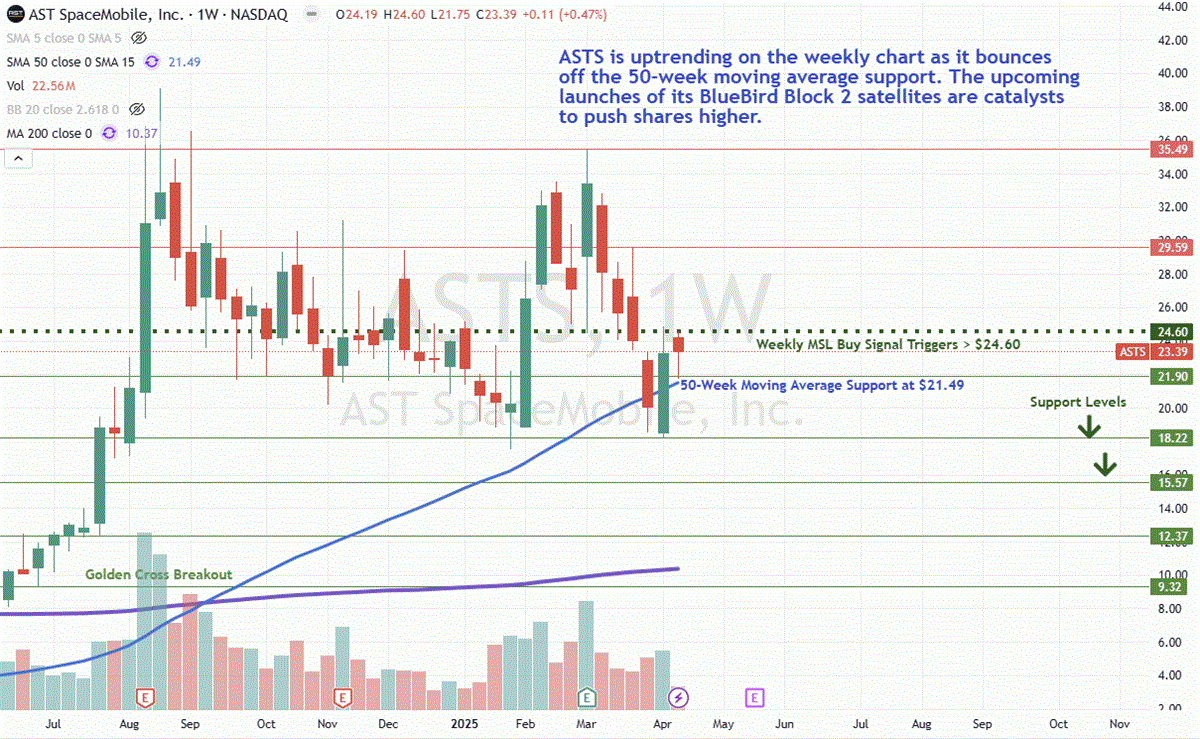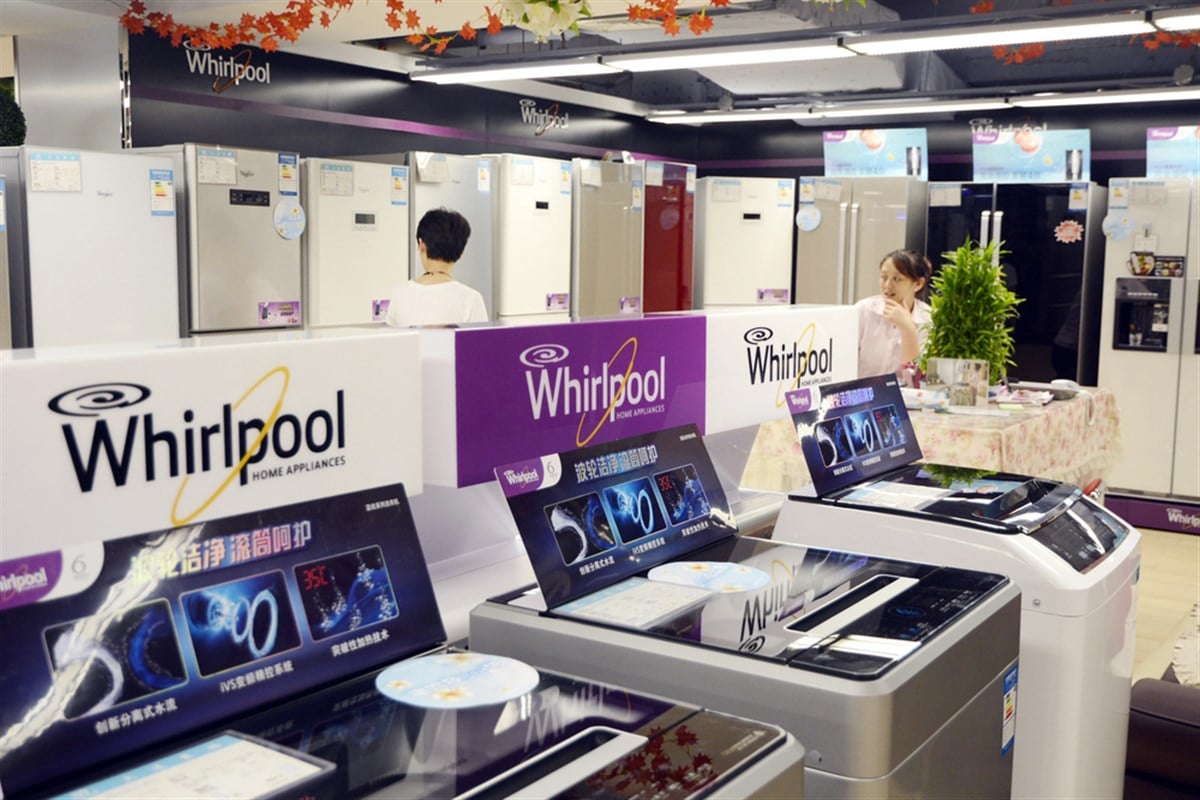AST SpaceMobile: 5 Reasons to Buy This Tiny Trailblazer Stock

AST SpaceMobile Inc. (NASDAQ: ASTS) is developing the world’s first space-based cellular broadband network, with direct-to-device (D2D) technology enabling access through any standard smartphone. The computer and technology sector company has spent over a billion dollars and seven years to launch its first five Bluebird satellites into orbit.
Although often compared to Starlink—Tesla Co. (NASDAQ: TSLA) CEO Elon Musk’s satellite broadband venture—AST SpaceMobile’s approach is fundamentally different. For starters, Starlink requires a satellite dish and modem, while AST SpaceMobile’s service integrates directly with existing mobile phones.
It is worth noting that Starlink is also collaborating with T-Mobile USA Inc. (NASDAQ: TMUS) to pursue its own D2D capabilities, emphasizing how competitive and promising this new frontier has become.
For investors considering this groundbreaking satellite cellular opportunity, here are five compelling reasons to take a closer look at AST SpaceMobile:
1. AST SpaceMobile Has 3 Billion Potential Customers
AST SpaceMobile’s broadband cellular network is supposed to fill in coverage gaps throughout the globe in order to ensure continuous coverage for mobile network operators (MNO).
The global wireless market is valued at approximately $1.1 trillion, encompassing 5.6 billion devices.
Yet, 42% of the world’s population and 90% of the earth’s surface currently lack cellular coverage—primarily due to ocean expanses and remote terrains.
By bridging these gaps, AST SpaceMobile offers a revolutionary solution, targeting a cumulative MNO customer base of nearly three billion people.
2. AST SpaceMobile Has Deals with Verizon, AT&T, and 45+ MNOs
Before even deploying its first five BlueBird satellites, AST SpaceMobile had validated its business model through major partnerships:
- AT&T Inc. (NYSE: T): Signed a six-year commercial agreement with a $20 million revenue commitment.
- Verizon Communications Inc. (NYSE: VZ): Secured a $100 million deal and invested in AST.
- Vodaphone Group Public Ltd. Co. (NASDAQ: VOD): Launched a joint venture, SatCo, aimed at delivering 100% geographic mobile coverage in Europe.
Vodafone also has a $25 million revenue commitment and equity investment along with Alphabet Inc. (NASDAQ: GOOGL) in AST SpaceMobile.
AST SpaceMobile has agreements with over 45 MNOs, including Rakuten Mobile, Bell Canada, Orange, Telefonica, TIM, MTN, Zain KSA, Saudi Telecom, Millicom, Globe Telecom, Smart Communications, Ooredoo Hutchinson, Telkomset, Telecom Argentina, Africell, Liberty Latin America, and Millicom, significantly expanding its reach and credibility.
3. Next-Gen BlueBird Block 2 Satellites Will Launch in 2025
The successful launch of its BlueBird Block 1 satellites in October 2024 has enabled non-continuous nationwide coverage in the United States, with over 5,600 cells in premium low-spectrum orbit.
In February 2025, AT&T and AST completed another video call demonstration over AT&T spectrum using its Block 1 BlueBird satellite service. This illustrated the seamless integration of its space-based cellular broadband networking using an everyday smartphone. Verizon and Vodaphone demonstrations also underscored the full operational capabilities of Block 1 BlueBirds.
In 2025, AST will begin deploying its Block 2 BlueBird satellites, featuring:
- Application-specific integrated circuits (ASICs)
- 10 GHz of processing bandwidth
- Data speeds up to 120 Mbps (note: corrected from “MPS”)
- 1,000% greater capacity than Block 1
These satellites, each spanning 2,400 square feet, are three times larger than their predecessors, with 40 Block 2 units already in production. AST has also secured launch capacity for up to 60 satellites through 2026 to enable continuous service across the United States, Europe, and Japan.
4. Costs Are Falling as Production Is Scaling
AST has expanded its manufacturing capacity. Its Midland, Texas, facility has expanded to 190,000 square feet, and the company plans to add another 85,000 square feet to its Florida facility and 50,000 more square feet to its Barcelona facility.
AST SpaceMobile is targeting the production of up to six satellites per month. When AST sent its first five Block 1 BlueBird satellites into orbit, the cost to manufacture and launch per satellite was around $30 million.
That number has dropped by nearly 30% to $19-$21 million per satellite. Keep in mind that these satellites are three times larger and ten times more powerful than their first-generation satellites.
5. ASTS Weekly Candlestick Chart Shows Potential Rebound

Technically, ASTS stock is exhibiting a bullish reversal pattern:
- Formed a market structure low (MSL) buy trigger above $24.60.
- The 50-week moving average (MA) stabilized support around $21.49.
- Key pullback support levels are at $18.22 (double bottom) and $15.57.
For technically inclined investors, these signals suggest potential upside momentum.
Learn more about ASTS


